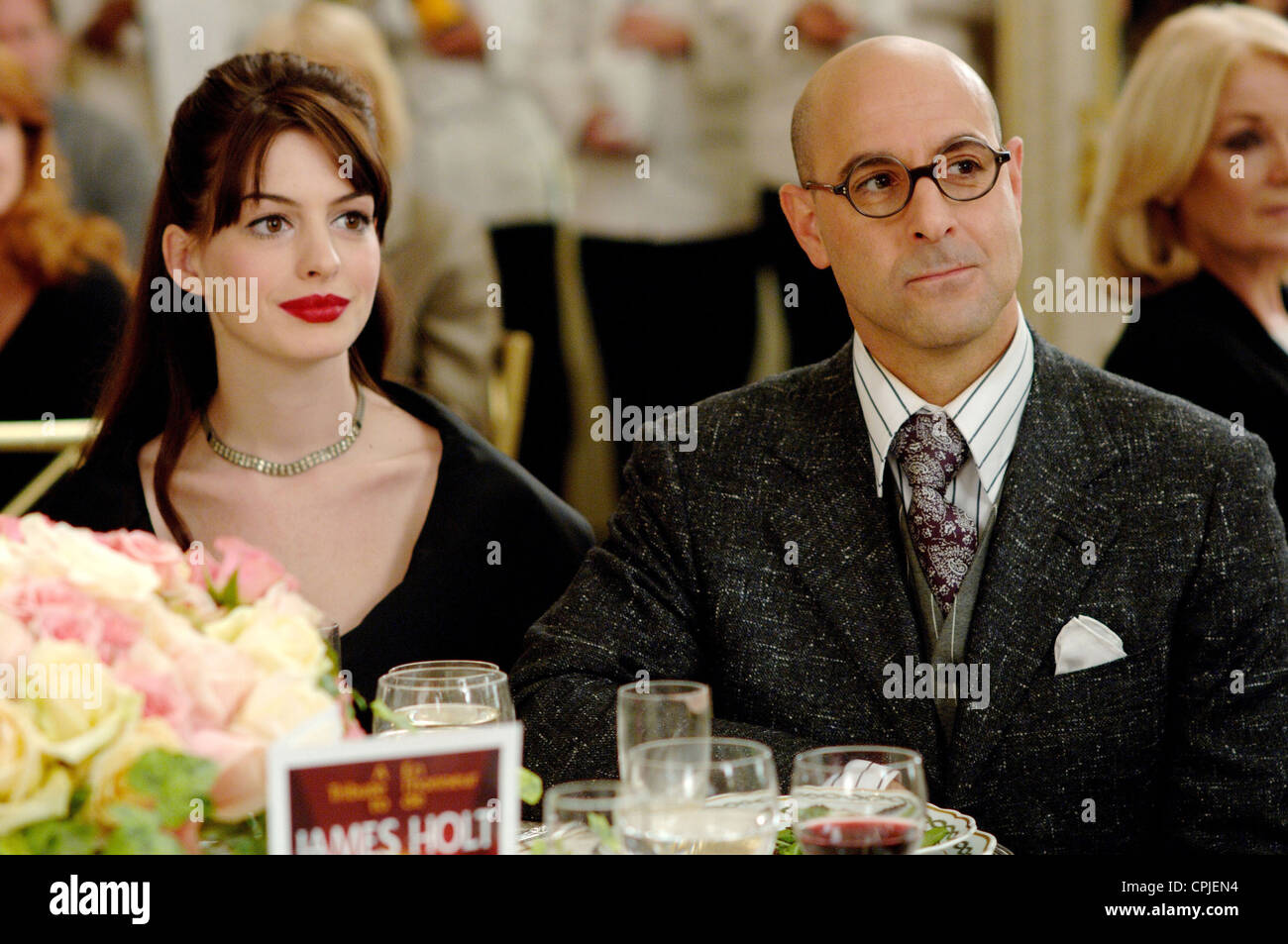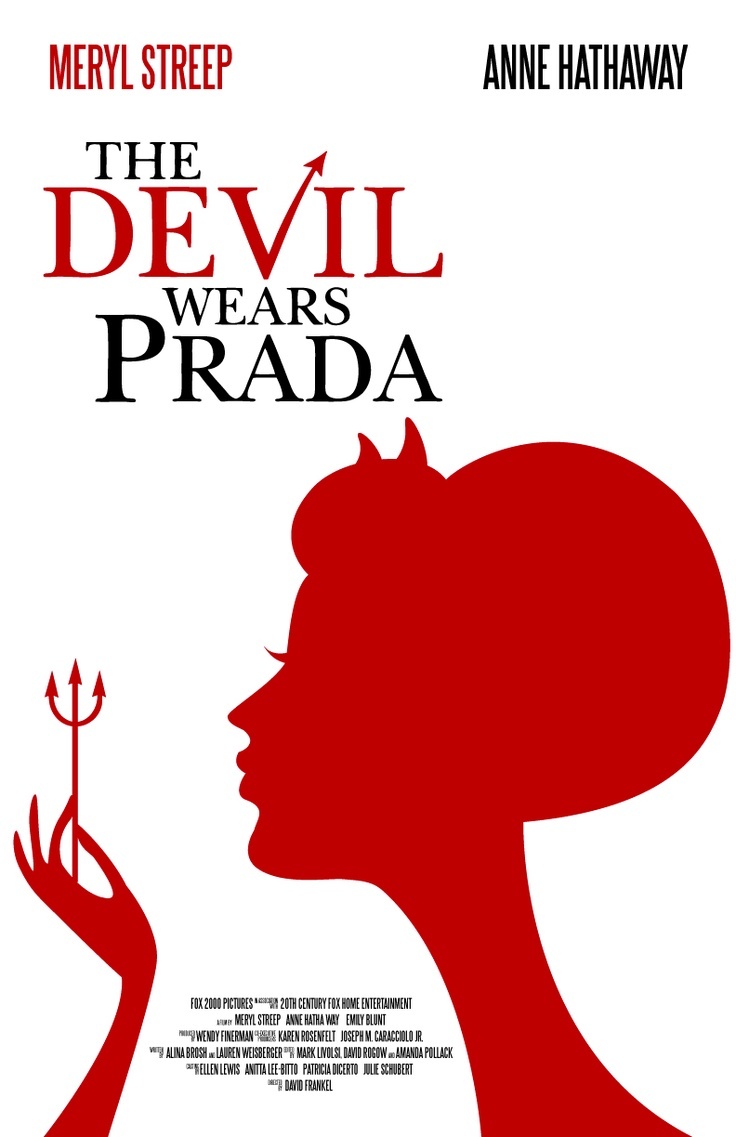Le Diable S'habille En Prada, or The Devil Wears Prada, has become a cultural phenomenon since its release in 2006. This film, based on Lauren Weisberger's best-selling novel, offers a captivating insight into the world of high fashion and the challenges faced by young professionals in the industry. The story revolves around Andrea Sachs, a aspiring journalist who lands a job as the junior assistant to the demanding editor-in-chief of Runway magazine, Miranda Priestly.
The Devil Wears Prada quickly captured the attention of audiences worldwide with its sharp wit, stellar performances, and stunning fashion. The film delves into the cutthroat world of fashion journalism, showcasing the glamorous yet demanding life of those who work behind the scenes. Directed by David Frankel, the movie stars Meryl Streep, Anne Hathaway, Emily Blunt, and Stanley Tucci, bringing the story to life with their exceptional talent.
Beyond its entertainment value, Le Diable S'habille En Prada addresses important themes such as ambition, integrity, and the price of success. This article will explore the film's production, characters, impact on popular culture, and its lasting legacy in the fashion world. Whether you're a fan of the movie or interested in the fashion industry, this comprehensive guide offers valuable insights into the world of The Devil Wears Prada.
Read also:Alec Winehouse A Comprehensive Look At The Life And Legacy
Table of Contents
- Background and Production of The Devil Wears Prada
- Key Characters in Le Diable S'habille En Prada
- The Role of Fashion in the Film
- Themes Explored in The Devil Wears Prada
- The Film's Cultural Impact
- Criticism and Controversy
- Awards and Nominations
- The Possibility of a Sequel
- The Devil Wears Prada's Lasting Legacy
- Conclusion and Final Thoughts
Background and Production of The Devil Wears Prada
The Devil Wears Prada began as a novel written by Lauren Weisberger, who drew inspiration from her own experiences working as an assistant to Anna Wintour, the editor-in-chief of Vogue magazine. The book was published in 2003 and quickly became a bestseller, leading to the development of the film adaptation. Directed by David Frankel, the movie was produced by Fox 2000 Pictures and filmed in New York City, capturing the essence of the city's vibrant fashion scene.
Challenges During Production
Creating a film that accurately depicted the high-stakes world of fashion journalism presented several challenges. The production team had to secure permission to film at various fashion shows and locations, which required extensive coordination. Additionally, ensuring that the costumes and set designs reflected the luxurious and sophisticated atmosphere of the fashion industry was crucial to the film's authenticity.
Key Characters in Le Diable S'habille En Prada
The Devil Wears Prada features an ensemble cast of talented actors who bring the story to life. Each character plays a significant role in the unfolding narrative, contributing to the film's depth and complexity.
Miranda Priestly
Portrayed by Meryl Streep, Miranda Priestly is the powerful and intimidating editor-in-chief of Runway magazine. Her character embodies the perfectionism and authority required to succeed in the fashion industry. Streep's portrayal earned her an Academy Award nomination for Best Actress.
Andrea Sachs
Anne Hathaway stars as Andrea Sachs, a recent college graduate with dreams of becoming a journalist. Andrea's journey from an inexperienced assistant to a confident professional forms the heart of the story. Her transformation highlights the challenges of balancing ambition with personal values.
Read also:Sam Skarsgaringrd A Rising Star In The World Of Entertainment
Emily Charlton
Emily Blunt plays Emily Charlton, Miranda's first assistant and Andrea's rival. Emily's dedication to her job and her willingness to make sacrifices for her career provide a stark contrast to Andrea's more balanced approach. Blunt's performance earned widespread acclaim and solidified her status as a rising star.
The Role of Fashion in the Film
One of the most striking aspects of The Devil Wears Prada is its emphasis on fashion. The film showcases the latest trends, iconic designers, and the meticulous attention to detail required in the fashion world. Costume designer Patricia Field worked closely with luxury brands to create outfits that reflected the characters' personalities and the film's aesthetic.
- Prada, Gucci, and other high-end brands feature prominently in the film.
- The costumes serve as a visual representation of the characters' growth and transformation.
- Fashion plays a crucial role in defining the film's tone and atmosphere.
Themes Explored in The Devil Wears Prada
The Devil Wears Prada addresses several important themes that resonate with audiences beyond the realm of fashion:
Ambition vs. Integrity
Andrea's journey highlights the tension between pursuing one's dreams and maintaining personal integrity. The film raises questions about the sacrifices individuals must make to achieve success and whether those sacrifices are worth the cost.
The Price of Success
Miranda Priestly's character exemplifies the sacrifices required to reach the top of the fashion industry. Her relentless pursuit of perfection comes at the expense of personal relationships and emotional well-being.
The Film's Cultural Impact
Le Diable S'habille En Prada has had a lasting impact on popular culture, influencing fashion, film, and even workplace dynamics. The film's success inspired a new generation of filmmakers and fashion enthusiasts, while its themes continue to resonate with audiences today.
Influence on Fashion
The film's emphasis on luxury brands and high fashion has inspired countless fashion enthusiasts and designers. It has also contributed to the popularity of certain designers, such as Prada, whose name is immortalized in the film's title.
Criticism and Controversy
While The Devil Wears Prada received widespread acclaim, it also faced criticism from some quarters. Critics argued that the film perpetuated stereotypes about the fashion industry and oversimplified the challenges faced by professionals in the field. Others questioned the film's portrayal of Anna Wintour, the real-life inspiration for Miranda Priestly.
Awards and Nominations
The Devil Wears Prada received numerous accolades, including:
- Three Academy Award nominations, including Best Actress for Meryl Streep.
- Golden Globe nominations for Best Performance by an Actress in a Motion Picture – Comedy or Musical.
- Multiple awards for costume design and production design.
The Possibility of a Sequel
Fans have long speculated about the possibility of a sequel to The Devil Wears Prada. While no official announcement has been made, the original cast and crew have expressed interest in revisiting the story. A sequel could explore the evolution of the fashion industry and the continued relevance of the film's themes in today's world.
The Devil Wears Prada's Lasting Legacy
Le Diable S'habille En Prada remains a beloved classic, celebrated for its sharp dialogue, memorable performances, and enduring relevance. The film's exploration of ambition, integrity, and the price of success continues to resonate with audiences worldwide. Its impact on the fashion industry and popular culture ensures its place in cinematic history.
Conclusion and Final Thoughts
The Devil Wears Prada has left an indelible mark on the world of film and fashion. Through its exploration of ambition, integrity, and the challenges of the fashion industry, the film offers valuable insights into the human experience. As we reflect on the movie's legacy, it is clear that its themes and messages remain as relevant today as they were when the film was first released.
We invite you to share your thoughts on The Devil Wears Prada in the comments below. Do you think a sequel would be a welcome addition to the franchise? What aspects of the film resonated with you the most? Your feedback helps us create content that better serves our readers. Don't forget to explore other articles on our site for more insights into the world of film and fashion.
Data and statistics referenced in this article are drawn from reputable sources, including Box Office Mojo, Rotten Tomatoes, and interviews with the film's cast and crew. For further reading, we recommend checking out Lauren Weisberger's novel, which provides additional context and depth to the story.

